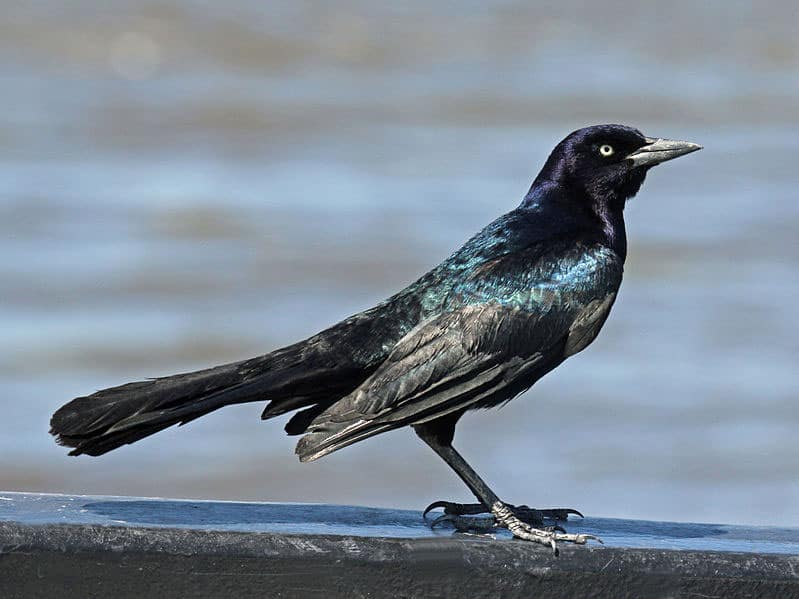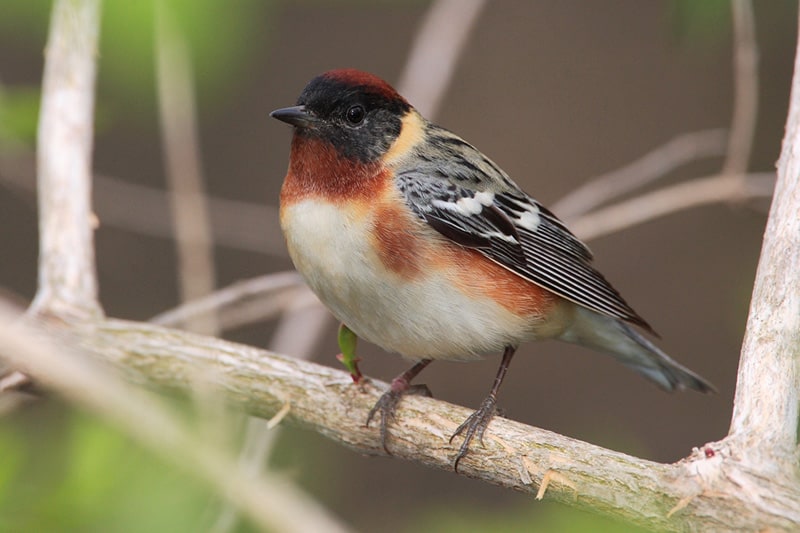Look For
This big, dark bird is like a common grackle with a tail extension. Males are dark bluish green in bright sunlight and 16 ½ inches in length. Females are dark brown overall with black wings and are slightly smaller than males (14 ½ inches long). This species was formerly considered a single species with the great-tailed grackle, which lives in the Southwest. Great-taileds are slightly larger and not as closely associated with water as boat-taileds.
Listen For
The boat-tailed grackle’s voice is a harsh, repetitive series of buzzing trills, squeaks, and whistles: krssshh-krssshh-krsssh, kweet-kweet, chaak-chaak-chaak! Many of the boat-tailed grackle’s sounds are very un-birdlike. Its call note is a deep chuck!
Find It
Very common and a permanent resident within its limited range, where it favors salt marshes and other open coastal areas. You can find them along the coasts of eastern North America. Boat-tailed grackles nest in colonies near water and are seldom found far from water.
Feeding Behavior
You can find the boat-tailed grackle foraging in the open on mudflats, beaches, roadsides, parking lots, garbage dumps, and cultivated fields. Prey includes mollusks, crustacean, frogs, turtles, insects, and lizards. You can also find them consuming grains, fruit, and food scavenged from humans or pets.
Nesting Behavior
The female boat-tailed grackle’s reproductive behavior is molded by the high rate of predation occurring in marshes. Females nest in sites such as marsh islands patrolled by alligators or in trees on highway traffic islands that are safe from predators.
The construction of the nest starts with the female building a platform then on top of the platform adds an outer and inner cup lined with pine needles and grass stems. Their incubation and nestling periods are shorter than other similar-sized songbirds. Young leave the nest prematurely.
Wow!
The boat-tailed grackle gets its name from the way it holds its tail in flight. The tail feathers form a V shape, like the keel of a boat.




